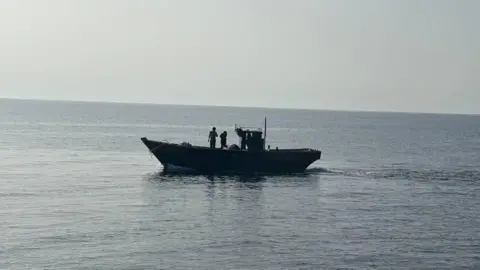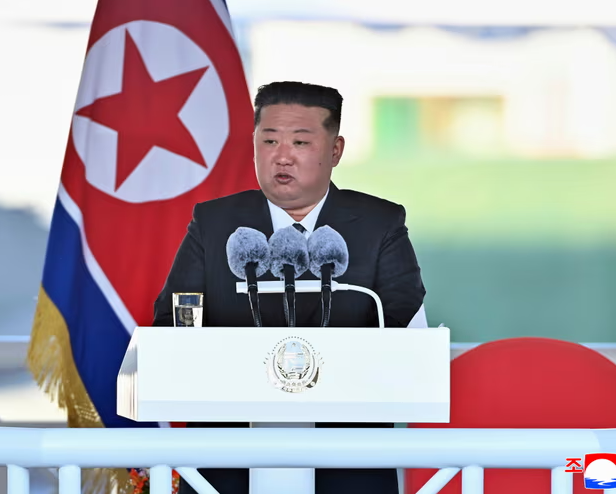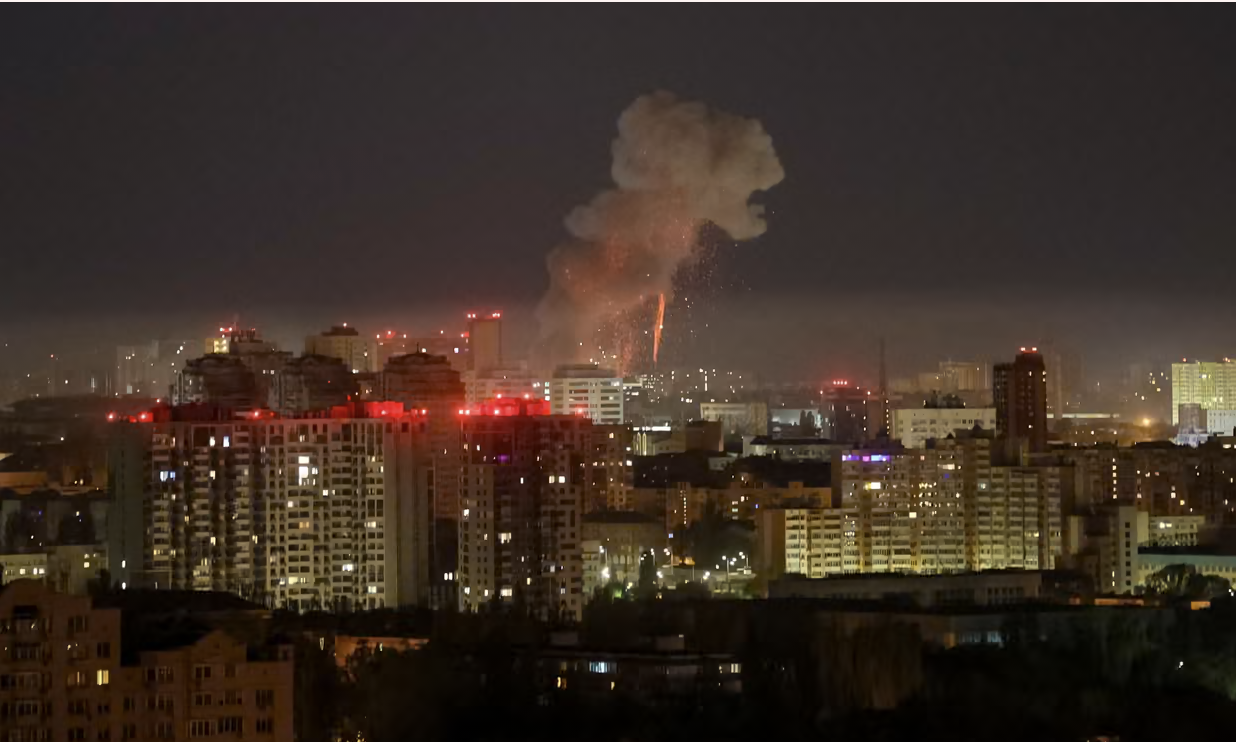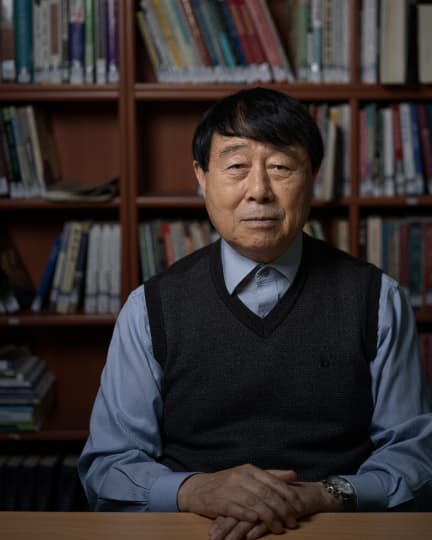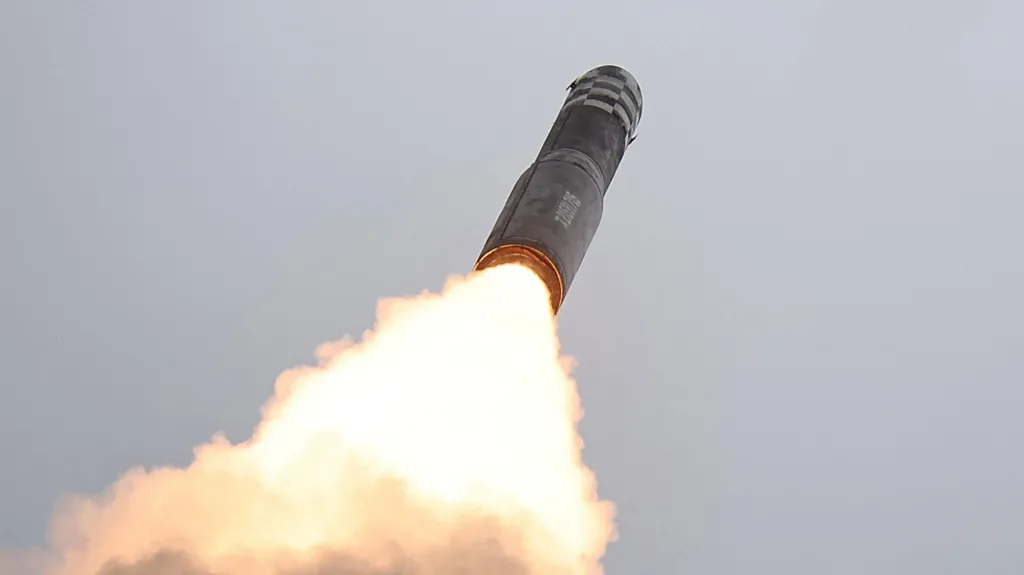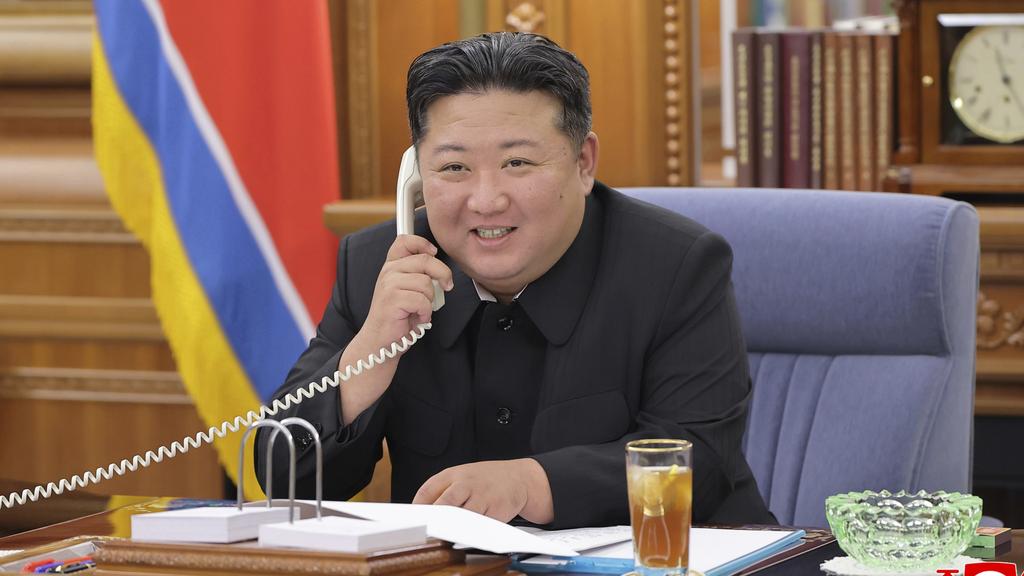
This article is more than
8 year oldNorth Korea threatens missile strike on US Pacific territory dangerously close to Australia
The reclusive state said it was “carefully examining” a plan to attack Guam, just hours after the US President issued his apocalyptic warning following reports North Korea had produced a missile-ready nuke.
Kim Jong-un is weighing up firing intermediate range ballistic missiles at the Micronesian island, situated in the Western Pacific, less than 3000 kilometres north of the Australian coast, according to state-run media.
The plan would create an “enveloping fire” around Guam, home to a number of US strategic military installations, with medium- to long-range ballistic missiles.


While North Korea’s official media regularly warns of strikes on US homeland and military assets in Asia, the threats are usually vague in detail and rarely linked to a direct order from Kim.
The rare explicit threat comes days after the US Security Council levied new sanctions on North Korea over its growing nuclear arsenal.
In a statement released by North Korea’s state-run KCNA news agency, a spokesman for the Korean People’s Army said the strike plan would be “put into practice in a multi-current and consecutive way any moment once Kim Jong Un, supreme commander of the nuclear force of the DPRK [Democratic People’s Republic of Korea], makes a decision.”


‘UNAVOIDABLE MILITARY CHOICE’
The report envisages a missile attack using the Hwasong-12 and targeting the Anderson Air Force Base in Guam, according to Dow Jones. The US has sent B-1B bombers at the Guam base to fly over the Korean Peninsula several times this year, with North Korea claiming it did so just this Tuesday, as well as conducting an intercontinental ballistic missile test.
Official representatives for US Pacific Command and the South Korean military did not immediately respond to requests for comment on any air exercises conducted on Tuesday.
North Korea said the missile and air-force flyovers were “driving the regional situation to an extreme pitch by bringing various kinds of nuclear strategic hardware before the very eyes of the DPRK.” If North Korea carried out its threat, it said, “the Yankees [will] be the first to experience the might of the strategic weapons of the DPRK.” It urged the US not to “regret today in the future” and force the North “to make an unavoidable military choice.”
The intermediate-range Hwasong-12 was successfully test-launched in May this year. It was North Korea’s longest-range weapon until last month, when Pyongyang on two occasions successfully test-launched the Hwasong-14, an intercontinental ballistic missile experts say is capable of reaching much of the US homeland.
In another statement citing a different military spokesman, North Korea also said it could carry out a pre-emptive operation if the US showed signs of provocation.
US officials on Tuesday said the Pyongyang regime had successfully produced a miniaturised nuclear warhead that can fit inside its missiles. The claims were made in the Washington Post , citing a confidential assessment by the US Defense Intelligence Agency.

If true, the development means the rogue state has crossed a key threshold on the path to becoming a fully-fledged nuclear power. It also means it is potentially capable of packing the weapon of mass destruction inside an intercontinental ballistic missile.
The revelation came a day after North Korea said it would launch “thousands-fold” revenge against the US over the adoption of tough UN sanctions imposed after its intercontinental ballistic launches.
TRUMP PROMISES FIRE
In his furious declaration, Mr Trump told a press briefing North Korea would be met with “fire and fury like the world has never seen” if it made any more threats against the United States.
Speaking while on vacation at his golf club in Bedminster, New Jersey, Mr Trump said: “He has been very threatening beyond a normal state. North Korea best not make any more threats to the United States.”
After many years of failure,countries are coming together to finally address the dangers posed by North Korea. We must be tough & decisive!
— Donald J. Trump (@realDonaldTrump) August 8, 2017
He added: “He has been very threatening. As I said, they will be met with fire, fury and frankly power the likes of which this world has never seen before.”
Officials at the DIA would not comment Tuesday on the report. The Office of the Director of National Intelligence has not commented.
John McCain said “great leaders” do not threaten foes unless they are ready to act — and he is not certain Mr Trump is ready to act against North Korea.
“You got to be sure you can do what you say you’re going to do,” the Republican Senator told KTAR News in Phoenix.

FEARSOME ARSENAL
The latest revelations come a month after the US said that it believed that up to 60 nuclear weapons are now controlled by North Korean leader Kim Jong-un, far more than previously thought.
Japan’s Defence Ministry also concluded in an annual white paper released yesterday that “it is possible that North Korea has achieved the miniaturisation of nuclear weapons and has developed nuclear warheads.”
Japan, a key US ally, is also a potential target of North Korean aggression. It has on several occasions deployed Patriot Missile Defence batteries around key cities and military sites to counter North Korea’s missile threats.
Take a spin around a Patriot launcher with this new interactive 3D model https://t.co/9EaQE5mW7e #SMDSymposium pic.twitter.com/0S87wvGJxb
— CSIS Missile Defense (@Missile_Defense) August 8, 2017
EXPLORE MORE: How Kim Jong-un’s nukes work
The most recent intercontinental ballistic missile (ICBM) test saw the failed re-entry vehicle splash down into waters off Japan’s Hokkaido island.
Intelligence analysts have been shocked by the rapid development of North Korea’s nuclear weapons program. Many analysts had believed it would be years before the country’s weapons scientists could design a miniaturised nuclear warhead.
Tensions have been running high since the nuclear-armed hermit kingdom staged two successful ICBM tests last month, sparking global alarm over its rapidly-advancing weapons capabilities.
‘PREPARED’ FOR MILITARY ACTION
Pentagon spokesman Lieutenant Colonel Chris Logan said the United States seeks a peaceful de-nuclearisation of the Korean Peninsula, but he warned military action is never off the table.
“We remain prepared to defend ourselves and our allies and to use the full range of capabilities at our disposal against the growing threat from North Korea,” Lt Colonel Logan said.
It's time to get serious about homeland missile defense: https://t.co/kjRZSYMisZ @CSIS pic.twitter.com/5G4qaK68aN
— CSIS Missile Defense (@Missile_Defense) August 2, 2017
The State Department declined to comment on the Post report, but Deputy Secretary of State John Sullivan said the department continues to work to make sure China and other countries enforce tough new sanctions.
Mr Sullivan warned “we’re not going to come to the table until the North Koreans have committed to” stopping their missile tests.

INTERNATIONAL REACTION
North Korea’s statement came two days after the UN Security Council unanimously approved new sanctions to punish the state, including a ban on coal and other exports worth over $US1 billion (A$1.26 billion).
The Pyongyang statement said the sanctions were part of a “heinous US plot to isolate and stifle” North Korea.
Get your Hwasong-14 ICBM first flight-test commemorative stamps! Newly released by #NorthKorea. (via KCNA) pic.twitter.com/xvyrXYWDf0
— Ankit Panda (@nktpnd) August 8, 2017
DELVE DEEPER: Inside the murderous dictatorship of Kim Jong-un
Earlier on Tuesday, Mr Trump offered couched praise for the international coalition coming together to pressure North Korea over its intercontinental ballistic missile launches.
“After many years of failure, countries are coming together to finally address the dangers posed by North Korea. We must be tough & decisive!” the US President wrote on Twitter.
ENGINEERING CHALLENGE
Despite the advances, North Korea still needs to overcome technical hurdles before it can claim to have perfected its nuclear weapons technology.
After Kim’s second ICBM test, experts said it appeared the “re-entry vehicle” that would carry a warhead back into Earth’s atmosphere from space had failed.

Without proper protection during a re-entry stage, a missile’s warhead would burn up.
“North Korea likely made some of the key measurements required to define those extreme conditions during the two July tests, but I can’t imagine it has learned enough to confidently make a warhead that is small and light enough and sufficiently robust to survive,” Stanford University expert Siegfried Hecker said in an interview with the Bulletin of the Atomic Scientists.
Watch: July 30 THAAD Intercept Test pic.twitter.com/1KRX4eVfft
— CSIS Missile Defense (@Missile_Defense) July 31, 2017
The former Los Alamos National Laboratory director said he did not think North Korea yet has sufficient missile or nuclear test experience “to field a nuclear warhead that is sufficiently small, light and robust to survive an ICBM delivery.” News that Kim appears to have produced a small nuclear warhead comes as international tensions around Pyongyang’s program ratchet up ever higher.

“Especially since last year, when it pushed ahead with two nuclear tests and launched more than 20 ballistic missiles, it has posed a new level of threat,” Japan’s defence ministry said in its annual report.
Japan, which lies across the sea from North Korea, has been wary for decades over its missile development as well as Pyongyang’s history of abducting Japanese citizens to train its spies.
